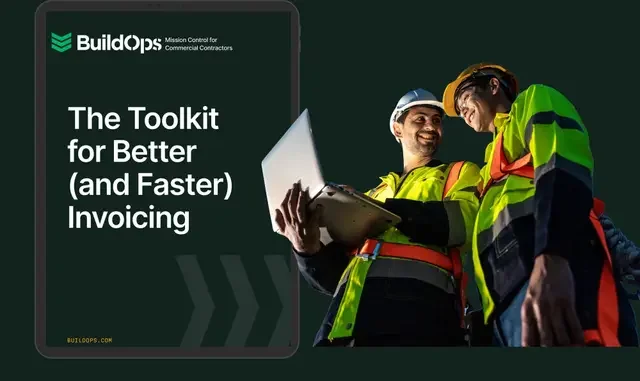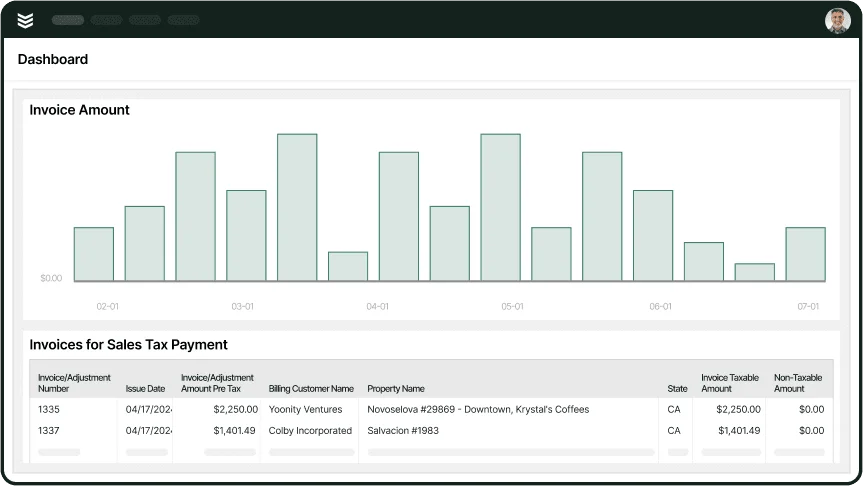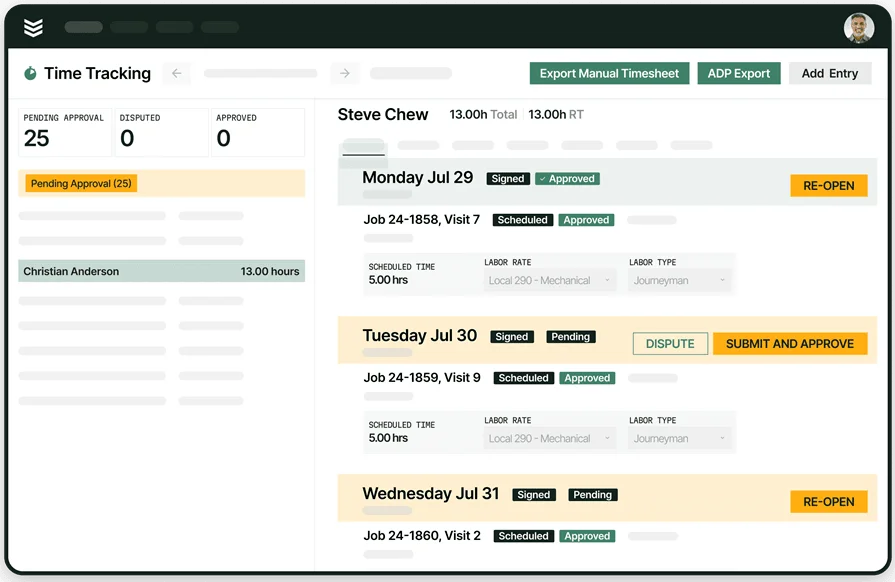Tracking every hour, cost, and change order on electrical jobs doesn’t need to feel like guesswork. Whether you’re running service calls or managing complex commercial installs, the right electrical contractor time and material billing software gives your team the visibility and control to stay on top of every dollar earned.
Manual billing systems? They’re holding you back. Time gets lost. Materials don’t get logged. And invoices end up delayed—or worse, missing charges. That’s where smart billing software makes all the difference. It brings together field data, labor, and materials in one place, so your techs stay focused on the job while the numbers take care of themselves.
This guide breaks down what to look for, which tools are worth your time, and how the best software out there can help you run a tighter ship. If you're looking to get ahead in the electrical industry, this one’s for you. Here’s what we’ll cover:
- Choosing the right electrical contractor time and material billing software
- 5 key features to look for in an electrical time and material billing software
- 6 best electrical time and material billing software tools
- 7 benefits of using time and material billing software as an electrical contractor
- 4 common electrical time and material billing software FAQs answered
Up next, we’ll dig into what you need to ask before choosing electrical contractor time and material billing software—from crew size and job type to how your techs handle T&M in the field.
Choosing the right electrical contractor time and material billing software
When it comes to billing accurately on the job, guessing costs isn’t an option. For electrical contractors working T&M jobs, having software that actually reflects the day-to-day grind is key. From tracking labor down to the minute to logging materials on-site, your tools should work like your best tech—fast, reliable, and sharp. But not all systems cut it.
Before picking a tool, make sure you’re asking the right questions. Here’s what to consider when evaluating electrical contractor time and material billing software for your business:
- •Crew setup – How big is your team, and how do they bill? Are multiple crews handling T&M work across different job sites? Do your techs log hours and materials in real time or at the end of the day?
- •Type of work – Are you focused on commercial service calls, tenant improvements, or long-term build-outs? Do your jobs involve a mix of scheduled and emergency work?
- •Current process – Are you tracking time and materials on paper, spreadsheets, or an app that wasn’t built for contractors? How often do billing errors or missed charges come up?
- •Back-office workflow – How does your office handle invoicing? Is accounting chasing down field tickets? Are you spending hours reconciling labor and materials at the end of each job?
- •Features – Does the software connect labor logs and material usage automatically to your invoices? Can your techs clock in, tag materials, and close out jobs—all from the field?
Locking in a system is about more than convenience—it’s about making sure every hour and every part gets billed. Next up, we’ll break down the five key features that actually matter in electrical time and material billing software—so you don’t waste time on bells and whistles that don’t serve your crew.
5 key features to look for in an electrical time and material billing software
T&M billing in electrical work depends on speed, accuracy, and no missing parts or hours. If your crew’s still writing details down on paper or texting updates to the office, you’re risking lost revenue every single day. Whether it’s tracking a change order mid-job or logging after-hours service calls, your tools should match the pace and precision your team works at in the field.
Electrical contractor time and material billing software should eliminate delays caused by technicians needing to add emergency rates or last-minute materials to invoices after hours. Key features should enable immediate and accurate invoice updates.
1. Technician mobile app
Your techs need billing tools at their fingertips. A strong mobile app gives them the power to log time, select materials, and kick off invoices directly from the field—all in real time. It also ensures those inputs sync with your office systems, cutting down on back-and-forth. Say your lead tech wraps up a subpanel install and catches a last-minute conduit swap. Instead of texting the office and hoping it’s billed later, he logs the extra labor and materials from his phone before leaving the site. This kind of control comes from using a technician mobile app that actually keeps up with the job.
2. Time tracking
You can’t bill what you don’t log. Accurate time tracking is one of the core functions of any billing software for electrical work. Your system should track regular, OT, and emergency hours—without forcing techs to remember every detail at the end of a long shift. For instance, during a multi-day lighting retrofit, your crew clocks in early, logs overtime, and rotates through tasks. Without time tracking that breaks down hours by job and type, billing becomes a mess.
Expert Tip
Accurate time tracking is the pillar that an electrical contractor time and material billing software rests on, because to unify your entire time tracking and payments cycle, you need to get this part right first. If you’re working on complex, commercial projects, you need a field time tracking software that can automate a lot of this process for you—but accurately. That’s where BuildOps can help.
3. Scheduling integration
Scheduling tools keep your jobs moving, but the best ones also connect directly to your billing process. When dispatch and labor data flow into invoicing, there’s no need to re-enter info—and no room for errors. Here’s the situation: You’ve got a service call lined up for a tenant with no heat in the middle of winter. Your scheduler dispatches a tech, the job is done fast, but billing is stalled because hours weren’t linked. With field service scheduling software, job data feeds into your billing system automatically, helping you get paid faster.
4. Dispatch tools
T&M billing depends on real-time coordination. Dispatching software should give you a live view of every job, crew, and work order—while also tying in with your time and billing systems. Consider a day where crews are split between an EV charger install, a tenant service call, and an emergency outage. Your dispatcher juggles the board, reschedules jobs, and reallocates techs. With connected electrical dispatch software, labor costs and time spent follow the changes in real time—so invoices stay accurate no matter how your day shifts.
5. Service agreement management
Recurring work can lead to billing blind spots if the system doesn’t track what's covered under contract and what’s billable. A solid billing platform links your service agreements directly to invoices, so your techs and back office stay aligned. Let’s say you’re on-site for a preventive maintenance visit under contract, but the tech finds and replaces a faulty contactor. Without linked service agreements, that replacement might never hit the invoice. A connected system ensures billable extras don’t slip through.

Service Work Toolkit for Electrical Contractors
Tighten up your service work and bill every hour with confidence.
Other electrical time and material billing software features to look for
Once you’ve locked in the essential tools, it’s worth exploring other features that add value—especially for larger electrical teams or businesses juggling multiple workflows. These additional tools may not seem critical at first, but they can reduce bottlenecks, increase billing visibility, and give your office better data to work from.
- CRM and customer tracking: Keeping a centralized log of customer interactions, job history, and site details can help field teams invoice smarter. Having access to detailed records means fewer back-and-forths and more accurate billing. Strong CRM tools for contractors keep everyone on the same page.
- Reporting and analytics: Understanding billing trends, time usage, and profitability on T&M jobs gives you better control over margins. Reporting and analytics features can break down which jobs are making money, which ones are dragging, and where labor costs are spiking.
- Fleet management: If your techs are constantly on the move, fleet tracking tools help ensure time logs match actual job time. They also help prevent wasted travel and improve technician accountability—both of which impact T&M billing accuracy.
These features round out your tech stack and give your electrical contractor time and material billing software the flexibility to scale with your business. Now that you know what to look for in the tools, let’s dig into which platforms actually deliver. Next up: a breakdown of the best software options available today.
6 best electrical time and material billing software tools
Electrical contractors need billing software that does more than handle estimates—it needs to track hours, materials, and payments with zero guesswork. Whether you're managing five techs or fifty, choosing the right platform can mean faster invoicing, cleaner records, and fewer unpaid extras. Here's a breakdown of top tools worth considering if you're looking to sharpen how your team handles T&M work.
1. Best for commercial: BuildOps
BuildOps gives commercial electrical contractors the ability to manage billing, job costing, and invoicing from a single platform. It’s built for real-time field and office coordination, so your techs can log hours and parts right from the job site—and your back office can invoice without chasing down data. It also integrates field time tracking, dispatching, and service agreements so billing doesn’t fall through the cracks.
How pricing works: Custom pricing based on business size and workflows. You'll need to request a quote based on your shop’s needs.
Features beyond billing: Beyond T&M billing, BuildOps handles project management, work order scheduling, and technician routing. It also includes deep reporting tools and a robust mobile app tailored to electrical field service work.
What sets it apart for commercial electrical contractors: BuildOps was developed specifically for the commercial trades, and that shows in how it handles multi-site work, crew scheduling, and long-term service contracts. It’s designed to work the way your team already operates, not force a one-size-fits-all setup.

Request a demo
Faster turnaround from field logs to final invoices, with BuildOps invoicing tools.
2. Best for residential: Bill4Time
Image Source: Bill4Time
Bill4Time is a cloud-based time tracking and invoicing platform that works well for smaller electrical shops focused on residential service work. It supports hourly billing, expense tracking, and online payments. The interface is simple, which can be great for fast-paced teams needing basic billing functionality. However, it may not be the best choice for electrical contractors managing larger crews or commercial accounts that need advanced dispatch or inventory tracking.
How pricing works: Starts around $27/month per user, with higher-tier plans offering more integrations and reporting tools.
Features beyond billing: Bill4Time includes built-in time logs, project dashboards, and basic document storage. It also allows for client portals where residential customers can review and pay invoices.
What sets it apart for residential electricians: The simplicity and ease of use make it great for solo contractors or small teams handling service calls, repairs, and hourly jobs.
3. Best for general contractors: HCSS
Image Source: HCSS
HCSS offers strong T&M billing tools as part of a larger construction management suite. It's ideal for contractors working on high-volume projects who need detailed tracking for labor, materials, and equipment. It excels at change order management and cost code tracking, which is valuable when multiple teams are involved on-site. Still, it may not be the best fit for electrical contractors looking for lean, field-ready mobile tools and real-time service invoicing.
How pricing works: Custom pricing based on modules selected and business size. Must contact sales for a quote.
Features beyond billing: HCSS includes equipment tracking, safety management, and detailed project reporting. Its ecosystem is built to support heavy-duty operations that involve a lot of moving parts.
What sets it apart for general contractors: It’s great for firms handling larger-scale work, especially where crews and costs cross over multiple jobs.
4. Best for small to mid-sized businesses: T&M Pro-Suite
Image Source: TM Billing
T&M Pro-Suite focuses specifically on time and material billing, making it a go-to for electrical contractors who need simplicity and billing precision. It’s designed to streamline work tickets, labor tracking, and material markup with minimal setup or training required. That said, it may not be the best option for contractors needing mobile access, dispatch capabilities, or integration with broader project management tools.
How pricing works: One-time software purchase starting around $595 per license, with no recurring monthly fees.
Features beyond billing: Includes itemized billing templates, preloaded electrical material databases, and markup calculators. It also offers printable work order forms and export options for QuickBooks.
What sets it apart for small to mid-sized shops: The tool simplifies T&M documentation without overcomplicating workflows, which makes it appealing for smaller teams doing service or repair work.
5. Best for independent contractors: Foundation
Image Source: Foundation
Foundation Software offers robust time and material billing tools within its larger accounting platform. It’s ideal for electrical contractors who want their billing tied directly into job costing and financial reporting without needing multiple platforms. Still, it may not be ideal if your team needs real-time field tools or mobile-first access for on-site work tracking.
How pricing works: Custom quotes based on modules selected and number of users; pricing typically scales with business size.
Features beyond billing: Includes certified payroll, job cost tracking, financial reporting, and integrated document management. Its T&M billing module supports custom billing formats and automated labor/material rates.
What sets it apart for independent contractors: Foundation gives solo or small-team contractors accounting-grade control over every invoice and project cost.
6. Best for custom item database: Vision InfoSoft
Image Source: Vision Infosoft
Vision InfoSoft specializes in electrical estimating and billing, offering a large database of labor units, parts, and assemblies tailored to electrical work. It’s best suited for shops that need detailed line-item pricing and estimate-to-invoice conversion. However, it may fall short for teams who rely on mobile techs or real-time field updates, since the platform leans toward office-based workflows.
How pricing works: Available through one-time purchase or subscription pricing. Requires a demo for current rates.
Features beyond billing: Comes with electrical pricing catalogs, tax rate automation, change order management, and basic project tracking.
What sets it apart for detailed billing workflows: The software’s strength is in customized pricing and material detail, helping electrical contractors stay accurate when jobs shift mid-project.
7 benefits of using time and material billing software as an electrical contractor
Time and material billing software doesn’t just help your team stay organized—it can change how your entire operation runs. From tighter cash flow to fewer disputes on invoices, the benefits go far beyond field data capture. Here’s what electrical contractors gain when they make the switch.
1. Faster, more accurate invoicing
The faster your team can invoice, the faster you get paid. T&M software helps turn labor logs and material usage into clean invoices with zero manual entry. It cuts delays and mistakes by pulling data directly from the field reports your techs have already entered, and transitions it into an invoice summary, including hours worked and specific notes about the work done.
Expert Tip
If you’re still working off of spreadsheets or Word docs, relying on a solid electrical contractor invoice template—especially one that can standardize your process like an electrical field service management software with built-in invoicing templates—can improve your operational efficiency dramatically.
2. Fewer missed materials or labor entries
In the rush to close out a job, details get lost. T&M billing software makes it easy for techs to capture hours and parts in real time—so your team doesn’t forget to charge for what was actually used. That’s where electrical work order invoice templates come in handy by helping field teams clearly log what gets done and what should be billed, and helps them do it with more consistency.
3. More transparency with customers
Clear breakdowns of time, labor, and parts reduce customer questions and billing disputes. When clients can see exactly what was done—and how long it took—it builds trust and speeds up payment. This kind of clarity also helps during estimates and proposals, making your bid easier to defend and adjust.
4. Improved estimating and quoting accuracy
With historical T&M data at your fingertips, you can quote future jobs with more confidence. Real-world job history helps sharpen estimates and adjust labor or material allowances where needed. If you're bidding frequently, this advantage stacks up—especially with help from focused tools like electrical contractor bidding software.
5. Better inventory tracking and cost control
Billing systems that log material use in real time help keep inventory levels accurate without a separate system. When tools are tied into job tickets, your back office can track stock, reduce shrinkage, and re-order materials at the right time. This level of integration works especially well with dedicated electrical inventory management strategies.
6. Stronger coordination between field and office
T&M billing software connects field inputs with office workflows, reducing back-and-forth over ticket info or hours worked. It keeps both sides aligned and speeds up approval, processing, and collections. This creates a smoother field service management system that scales with your crew size.
7. Fewer delays in your billing workflow
Every delay in your billing process chips away at cash flow. With automated billing steps and synced workflows, T&M software helps eliminate bottlenecks from job closeout to invoice sent. If your current process has too many handoffs, mapping it against an efficient field service management workflow can highlight exactly where to cut the lag.
4 common electrical time and material billing software FAQs answered
If you're new to time and material billing tools—or looking to upgrade what you’ve got—it helps to start with the basics. These are the questions most electrical contractors ask when evaluating software. From how it works to what it costs, here's what you need to know before diving in.
1. What is electrical time and material billing software?
Electrical time and material billing software is a digital tool that helps contractors track labor, materials, and job details in real time—so they can generate accurate invoices based on actual time spent and resources used on the job. This is useful for dealing with a wide range of job types.
It can be anywhere from scheduled maintenance to emergency work done by service-heavy electrical contractors. The software captures jobsite inputs and syncs them to back-office workflows, cutting delays and improving accuracy across the board.
2. How does time and material billing software for electrical contractors work?
T&M billing software helps connect your crew in the field with your office team, eliminating the gaps between work done and billing sent. It gives technicians the ability to log time and materials on-site, while letting the office access that data to create accurate, timely invoices.
Key functions include:
- Logging labor by hour, type (regular, OT), and technician
- Tagging parts and materials used on each job
- Auto-calculating markups, rates, and taxes
- Linking service tickets directly to invoicing workflows
- Syncing with mobile apps for in-field data entry
- Supporting custom pricing or flat-rate structures
- Generating detailed invoices for review and payment
- Integrating with customer records and past work history
Together, these features help reduce billing delays, eliminate manual data entry, and make it easier to track profitability job by job.
3. Is time and material billing software worth the cost for electrical contractors?
For most contractors handling service work, emergency calls, or variable-scope projects, time and material billing software quickly pays for itself. By reducing missed charges, speeding up invoicing, and improving recordkeeping, it directly impacts your bottom line. While pricing varies based on features, users, and company size, the real cost is in sticking with outdated systems. Delays in billing or missed labor can easily surpass what you’d pay for better software—especially on fast-paced jobs where accuracy matters.
Did you know
The time and material billing software built right into BuildOps was certainly worth the cost for Jolma Electric. They saw a 50% spike in efficiency after switching to BuildOps.
4. Best practices for implementing time and material billing software for electrical contractors
Rolling out new software can be disruptive without a plan. But with the right steps, you can get your team on board fast and start seeing results from day one. Here’s how to implement your electrical contractor time and material billing software effectively:
- Choose a tool that matches how your crews already work
- Set clear goals (speed up billing, improve accuracy, etc.)
- Involve both office and field teams early in the process
- Train technicians on mobile features before rollout
- Integrate the software with your existing CRM or dispatch tools
- Start with a pilot group before scaling across all teams
- Establish clear workflows from time log to invoice approval
- Track key metrics (invoice time, error rates, labor costs)
- Adjust user roles and access permissions to reduce confusion
- Get feedback often—then iterate your process as needed
Electrical contractor time and material billing software has one job—help you get paid for every hour and every part. From field logs to invoice approvals, the best tools remove the gaps and guesswork that slow teams down or leave money on the table. Whether it's tighter time tracking, automatic material tagging, or faster approvals, these tools give electrical contractors the edge where it counts: the bottom line.
Plenty of software platforms offer pieces of the puzzle, but very few bring it all together in one place. That’s where BuildOps makes a difference. It's not just a billing tool—it’s a full-service platform built for commercial electrical work. And the features covered here? Most systems don’t check all those boxes. BuildOps does.

Demo electrical time and material billing software
Take a close look at how electrical T&M billing software could fit your crew and your jobs.






